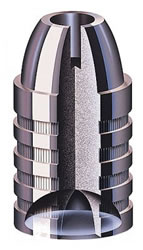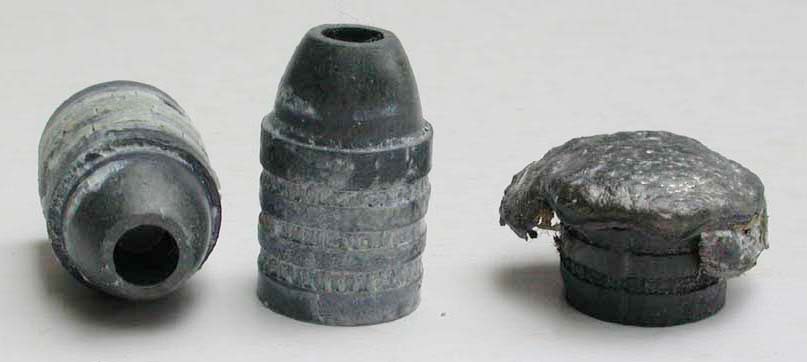by Sir Joseph Whitworth
First Comparative Trials
Of The Whitworth And Enfield Rifles
In the year 1855 I commenced a series of experiments in the new rifle gallery, and was at that time requested to adhere to the service charge of powder, viz., 70 grains, as well as to the service weight of bullet, viz., 530 grains, but I was unrestricted in every other particular...
...The expansion principle may be combined with an easy mechanical fit, so that a projectile made of metal harder than lead, such as an alloy of lead and tin, may be used, and the bullet will then expand sufficiently to fill the bore, giving a penetration more than double that of lead.
In my earlier experiments I tried the effect of lengthening the bullet of the Enfield rifle, and I showed, by means of a piece of tissue paper placed three yards from the gun, that an increase of only a quarter of an inch in length caused the bullet to strike obliquely. This fact was clearly ascertained by the mark left upon the paper. I then made a barrel of the same bore with a twist of 1 turn in 30 inches, instead of 1 turn in 78 inches, and I kept the weight of the lengthened bullet at 530 grains by making a portion of the interior hollow. The result was that with the same charge the bullet hit the target at the same height.
Having thus proved that there was no loss of range on account of the increased rotation of the bullet, and that the trajectory was as good as before, I made another barrel, reducing the minimum diameter to .5 inch, and lengthening the projectile, and finally I reduced the bore to .45 inch.
In order to satisfy myself as to the effect of increased twist in the rifling I tried barrels with 1 turn in 20 inches, 1 turn in 10 inches, 1 turn in 5 inches and lastly with 1 turn in 1 inch. I fired from these barrels mechanically fitting bullets of lead and tin, and with the barrel rifled to 1 turn in 1 inch (using 35 grains of powder) I penetrated through 7 inches of elm-tree planks.
In this way I exhausted the subject, and arrived at the result that the best twist for a rifled musket bullet would be 1 turn in 20 inches, the minimum diameter of the barrel being .45 inches...
...I experienced great opposition to the change of rifle turn from 1 turn in 78 inches to 1 turn in 20 inches, or I should have made the twist somewhat more rapid in order to fire a steel bullet when necessary for penetration. It should be understood that the amount of rotation must be increased when the specific gravity of the bullet is made less, otherwise the projectile will fall over in its flight, - that is to say, an iron projectile requires more rotation than one made of lead...
...The superiority of the Whitworth, as compared with the Enfield rifle, was first proved in a series of trials made at Hythe, in the year 1857, under the direction of Lord Panmure, then Minister of War.
These trials led to no satisfactory conclusion, and after a lapse of eighteen months a Committee of Officers reported to the Government in 1859 that the bore of my rifle was to small for use as a military weapon.
Compare with this the report of another Committee of Officers made in 1862, "that the makers of every small-bore rifle, having any pretensions to special accuracy, have copied to the letter the three main elements of success adopted by Mr. Whitworth, viz., diameter of bore, degree of spiral, and large proportion of rifling surface."
In 1869 a Special Committee reported to the War Office that the calibre of a breech-loading rifle, should be .45 inches, as appearing to be the most suitable for a military arm. This conclusion is directly contrary to that arrived at in 1859, but is the exact bore which I recommended in 1857...
http://www.lrml.org/historical/whitworth/gunsandsteel02.htm[/quote]
Confederate Whitworth bullet













